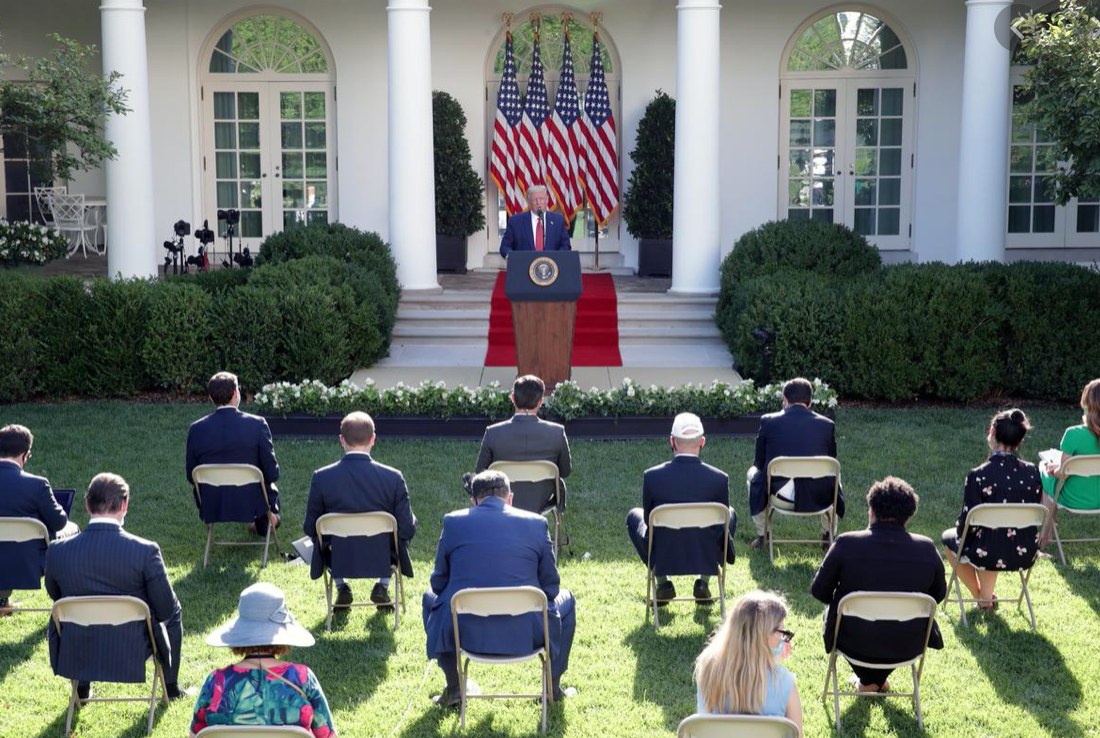Welcome to Byron York’s Daily Memo newsletter.
Was this email forwarded to you? Sign up here to receive the newsletter.
TRUMP’S VIRUS CAMPAIGN FRUSTRATION. At his Rose Garden news conference Tuesday, it was more than clear that the coronavirus issue just eats away at President Trump every day. He talks frequently about how well things were going before the disease came to America. The economy was strong. Democrats had thrown everything they had at him during impeachment — and lost. Democratic strategists openly talked of Trump winning a second term.
“Then the virus came in, and the world is a different place,” Trump said wistfully to a small group of socially-distanced journalists. Coronavirus brought 139,000 U.S. deaths (so far), along with economic devastation. Then came the Black Lives Matter protests. And then came the polls showing Democrat Joe Biden leading Trump nationally and in some key states. And that is with Biden doing little traditional campaigning — or “hiding in the basement,” as Trump supporters say.
Subscribe today to the Washington Examiner magazine that will keep you up to date with what’s going on in Washington. SUBSCRIBE NOW: Just $1.00 an issue!
Tuesday was a big campaign day — in the “different place” that is the world today. Biden delivered a policy address from a room in Wilmington, Delaware. In it, he moved left on the issue of the environment, inching closer to the Green New Deal embraced by the Democratic party’s left wing. Biden promised to spend trillions creating new jobs, and even to establish a new division within the Justice Department — the Environmental and Climate Justice Division.
Trump, for his part, stayed at the White House. In the Rose Garden late Tuesday afternoon, he delivered what might be called a news and campaign sandwich. He started with news — his administration’s move to pressure China over Hong Kong and the virus — and then shifted to the campaign, criticizing Joe Biden nonstop. And then, at the end, he moved back to news, taking a few questions from gathered reporters.

It’s as close to a campaign event as is possible now, with the virus making mass gatherings impossible. But the fact is, the absence of mass rallies hurts Trump more than Biden. The president built his 2016 campaign around huge rallies and fully expected to do the same in 2020. His identity as a politician revolves around big, enthusiastic crowds.
Now, though, Trump has to find a new way. He has no choice. That’s what Tuesday was about. It wasn’t a traditional “Rose Garden strategy,” in which a president campaigns from the White House by announcing and discussing and publicizing official acts. Tuesday, by contrast, was a hybrid news and campaign event. Democrats will protest that the president was using a government facility — the White House — to campaign. But Trump’s appearance involved official acts as well as campaigning, and the Democratic complaints are likely to go nowhere.
There will be more. The rallies that characterized Trump’s 2016 campaign will not be returning this summer, and possibly not at all before election day. Trump and Biden will have to come up with alternative ways to reach voters on a day-in, day-out basis. For Trump, there will be no substitutes for those packed, occasionally wild, rallies of 2016. Tuesday at the White House was a glimpse of his future campaign.

